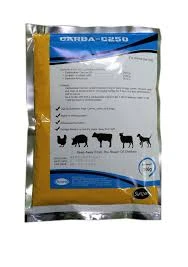- Afrikaans
- Albanian
- Amharic
- Arabic
- Armenian
- Azerbaijani
- Basque
- Belarusian
- Bengali
- Bosnian
- Bulgarian
- Catalan
- Cebuano
- Corsican
- Croatian
- Czech
- Danish
- Dutch
- English
- Esperanto
- Estonian
- Finnish
- French
- Frisian
- Galician
- Georgian
- German
- Greek
- Gujarati
- Haitian Creole
- hausa
- hawaiian
- Hebrew
- Hindi
- Miao
- Hungarian
- Icelandic
- igbo
- Indonesian
- irish
- Italian
- Japanese
- Javanese
- Kannada
- kazakh
- Khmer
- Rwandese
- Korean
- Kurdish
- Kyrgyz
- Lao
- Latin
- Latvian
- Lithuanian
- Luxembourgish
- Macedonian
- Malgashi
- Malay
- Malayalam
- Maltese
- Maori
- Marathi
- Mongolian
- Myanmar
- Nepali
- Norwegian
- Norwegian
- Occitan
- Pashto
- Persian
- Polish
- Portuguese
- Punjabi
- Romanian
- Russian
- Samoan
- Scottish Gaelic
- Serbian
- Sesotho
- Shona
- Sindhi
- Sinhala
- Slovak
- Slovenian
- Somali
- Spanish
- Sundanese
- Swahili
- Swedish
- Tagalog
- Tajik
- Tamil
- Tatar
- Telugu
- Thai
- Turkish
- Turkmen
- Ukrainian
- Urdu
- Uighur
- Uzbek
- Vietnamese
- Welsh
- Bantu
- Yiddish
- Yoruba
- Zulu
Dec . 03, 2024 13:48 Back to list
ivermectin injection for sheep
Ivermectin Injection for Sheep A Comprehensive Guide
Ivermectin is a widely recognized antiparasitic medication used in veterinary medicine, particularly for livestock such as sheep. Its efficacy against a variety of internal and external parasites makes it an essential tool in sheep husbandry. This article will explore the importance of ivermectin, its mechanism of action, dosage guidelines, administration methods, and considerations for its use in sheep.
Understanding Ivermectin
Ivermectin belongs to the avermectin class of antiparasitic agents derived from the fermentation products of the soil bacterium *Streptomyces avermitilis*. It functions by paralysing and killing parasites through its action on their nervous system. Specifically, ivermectin binds to glutamate-gated chloride channels, leading to an influx of chloride ions into the parasite's nerve and muscle cells, causing paralysis and death.
In sheep, ivermectin is primarily used to target various parasitic infections, including roundworms (nematodes), lungworms, and external parasites like ticks and lice. Regular administration of ivermectin is crucial for maintaining the overall health and productivity of sheep.
Dosage and Administration
The dosage of ivermectin for sheep is typically 0.2 mg per kg of body weight, administered as a subcutaneous injection. This means that for a 70 kg sheep, the dosage would be approximately 14 mg. It’s essential to weigh sheep accurately to avoid underdosing or overdosing, both of which can lead to ineffective treatment or potential toxicity.
Ivermectin is generally available in different formulations, including injectable solutions, pour-on products, and oral formulations. The injectable form is often preferred for its precision and rapid absorption, resulting in a quicker onset of action. When administering ivermectin, it’s vital to use clean needles and follow proper injection techniques to minimize the risk of injection site infections.
Timing and Frequency of Treatment
ivermectin injection for sheep

The timing and frequency of ivermectin administration depend on several factors, including the type of parasites present, the sheep's age, environment, and management practices. For young lambs, for instance, treating at weaning time is common, whereas adult sheep may require treatment in the spring and fall to coincide with parasite life cycles.
Regular fecal testing can help determine the necessity and timing of treatments, ensuring that the use of ivermectin is strategic and minimizes the risk of developing resistance among parasites. Over-reliance on ivermectin can lead to reduced effectiveness, making it essential to incorporate rotational deworming practices with other classes of anthelmintics.
Considerations and Best Practices
While ivermectin is highly effective, certain considerations should be taken into account to ensure its responsible use. First, pay attention to withdrawal times when administering ivermectin before slaughter. Typically, the withdrawal period for ivermectin in sheep is around 14 days, which ensures that drug residues do not remain in meat or milk.
Additionally, observe sheep for any adverse reactions post-treatment. While side effects are rare, they can occur and may include local reactions at the injection site or, in extreme cases, neurological signs. Always consult a veterinarian if any concerning symptoms arise.
Environmental factors and management practices also play a critical role in parasite control. Implementing rotational grazing and maintaining good hygiene can significantly reduce parasite loads in the flock, complementing chemoprophylaxis with ivermectin.
Conclusion
Ivermectin injection is an invaluable resource for sheep farmers seeking to control parasitic infections effectively. Understanding its proper use, dosage, and the importance of mindful management practices ensures that sheep remain healthy and productive. By prioritizing responsible use of this potent antiparasitic agent, sheep producers can safeguard their flocks against debilitating parasites, ultimately supporting animal welfare and farm profitability.
-
Guide to Oxytetracycline Injection
NewsMar.27,2025
-
Guide to Colistin Sulphate
NewsMar.27,2025
-
Gentamicin Sulfate: Uses, Price, And Key Information
NewsMar.27,2025
-
Enrofloxacin Injection: Uses, Price, And Supplier Information
NewsMar.27,2025
-
Dexamethasone Sodium Phosphate Injection: Uses, Price, And Key Information
NewsMar.27,2025
-
Albendazole Tablet: Uses, Dosage, Cost, And Key Information
NewsMar.27,2025













